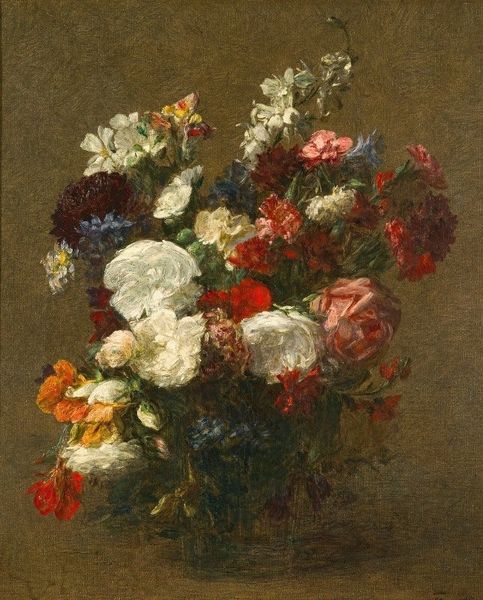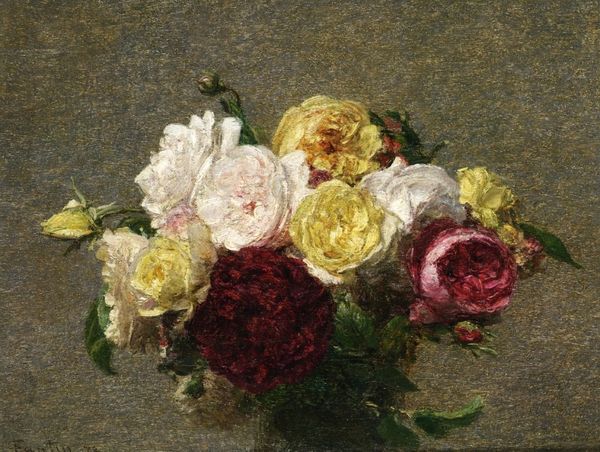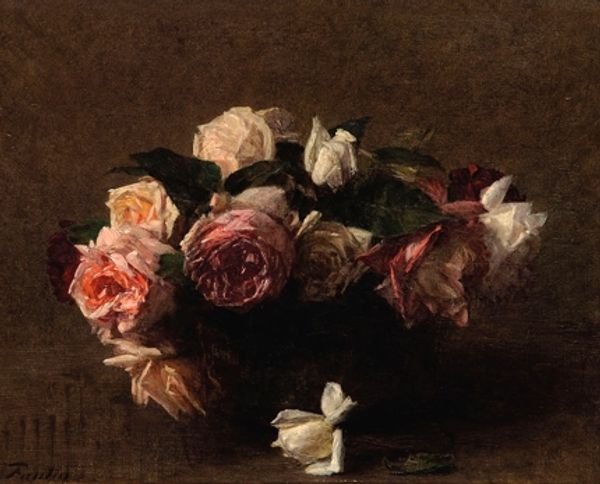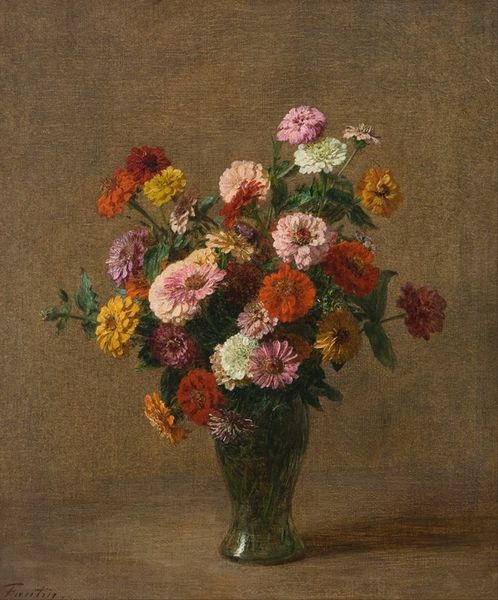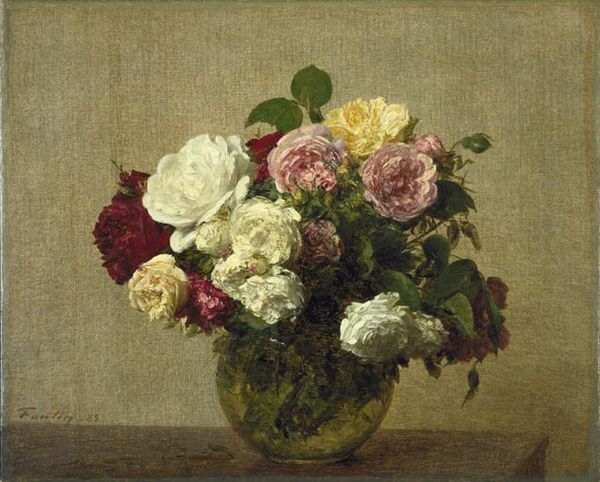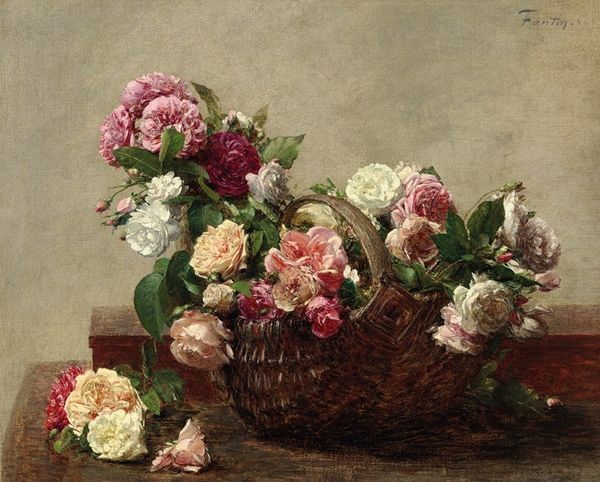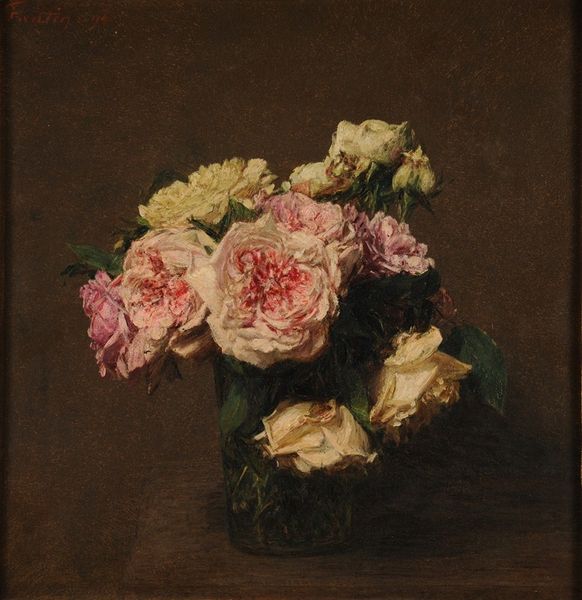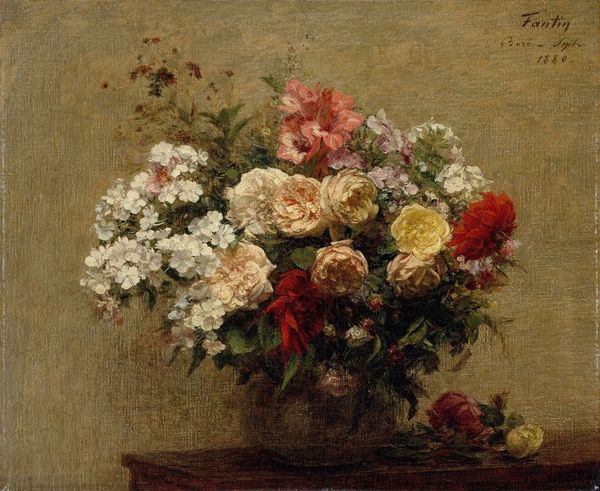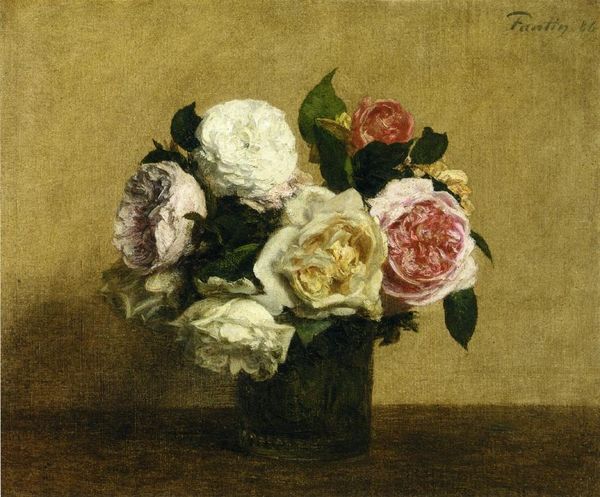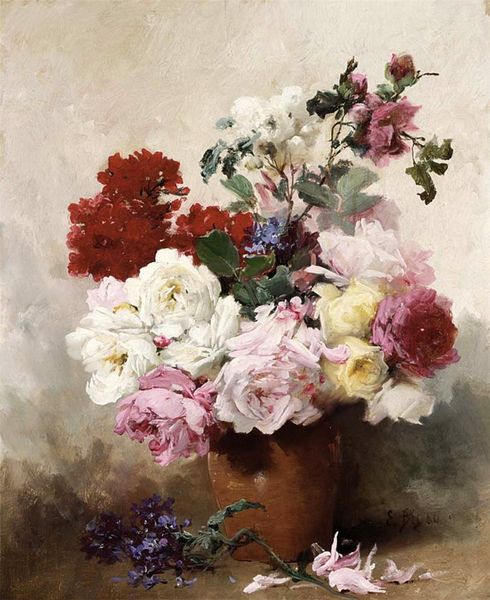
Dimensions: 59 x 51.5 cm
Copyright: Public domain
Curator: Fantin-Latour’s “Hollyhocks without Vase,” painted in 1884, showcases the artist's masterful handling of oil paint to capture the delicate beauty of these flowers. Editor: The first thing that strikes me is its muted palette – those subdued pinks and yellows create a feeling of quiet melancholy. It almost feels like witnessing beauty in a state of fading, not decay. Curator: Absolutely. Fantin-Latour’s still lifes are fascinating studies in the materiality of paint itself. He was deeply engaged with the means of production, moving away from overtly sentimental depictions towards capturing the essence of form and light through texture and layering. He’s less interested in grand narrative, and more with humble subjects elevated through artistic process. Editor: That's an interesting perspective, because the Romantic tendencies of the late 19th century, particularly in France, can hardly be divorced from this painting, which also exists amidst increased industrialization and commodification. Aren't the artist's formal preoccupations in that same era, when social norms were in such flux, a quiet but persistent focus on domestic spaces, and feminine representation in contrast to those anxieties about changing roles? Curator: I concede your point – it's undeniable that social change provided a backdrop. But by focusing on the formal qualities and de-emphasizing allegorical content, Fantin-Latour elevates what was once seen as 'mere' decorative craft – floral arrangement – into high art. There is something of a revolutionary spirit to this, when so much artistic energy was elsewhere going into portraiture or narrative painting in other genres of that time. The means are foregrounded as the message in the context of the dominant artistic discourse, to suggest he isn’t trying to deliver a lesson or reinforce social values. Editor: Maybe…or maybe this seemingly innocuous rendering provided him a certain amount of social standing because it avoided engaging pressing social and cultural anxieties that came with his position in the Parisian art market at that moment? Perhaps there are social benefits embedded within that “humble” engagement, which, while innovative in his technique, isn't that politically divorced when the French third Republic attempted to grapple with its identity. Curator: Hmm, that definitely adds a layer of complexity to it! Looking closely at how the oil paint is built up – the very visible brushstrokes, that palpable surface – reveals that this image itself, regardless of socio-political implications, came through labour and materiality as process. Editor: It encourages us to appreciate art that reflects, subtly or overtly, broader realities. Fantin-Latour’s flowers, whatever they may be, become touchstones for understanding not just artistic technique, but societal nuances as well.
Comments
No comments
Be the first to comment and join the conversation on the ultimate creative platform.
